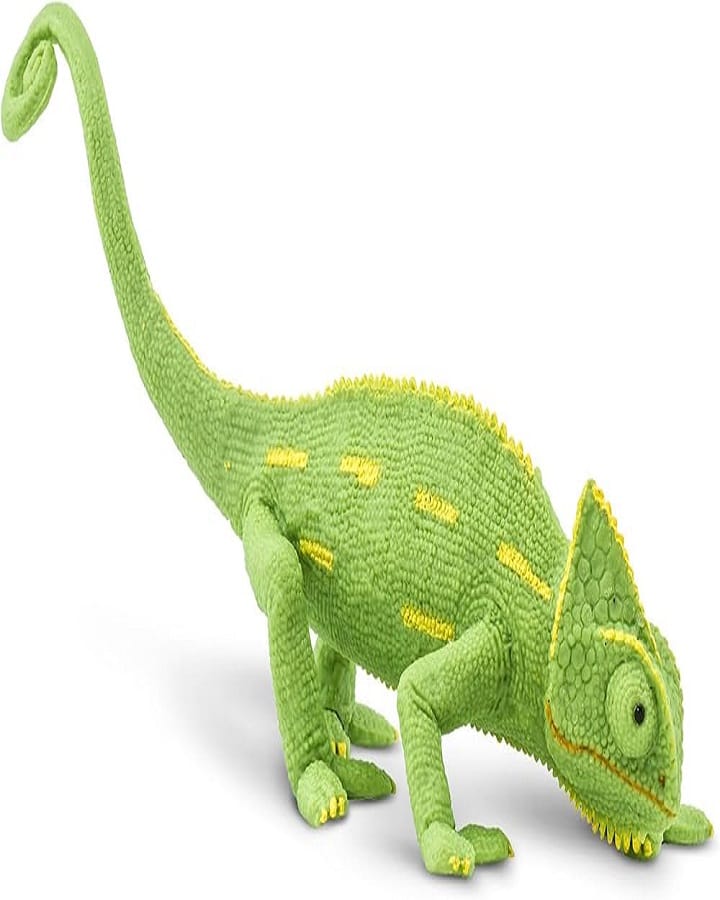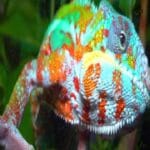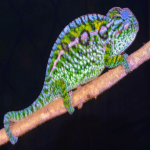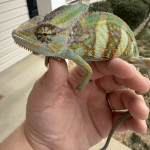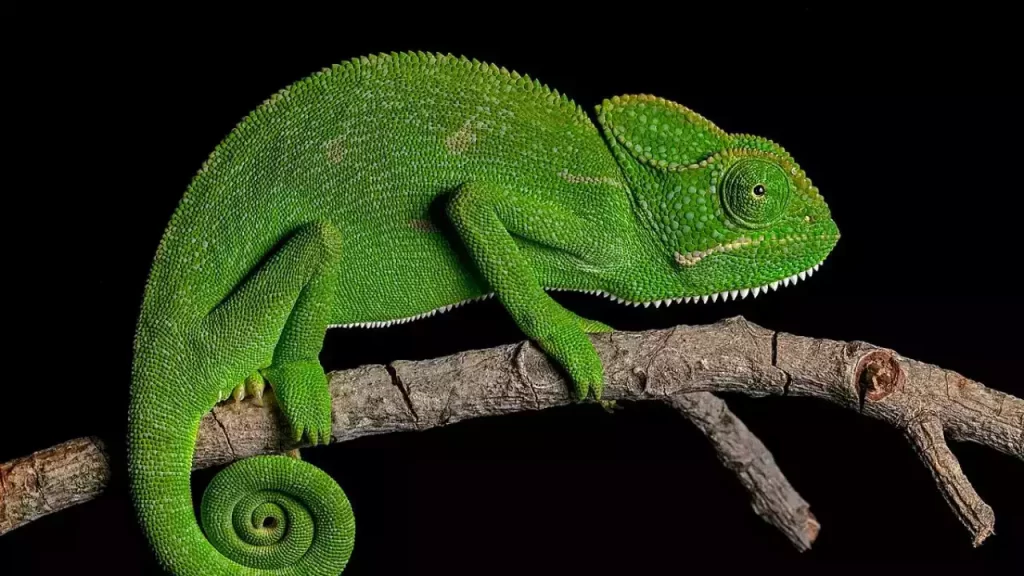
Image Credit – Hema
The veiled chameleon is a fascinating reptile species known for its striking colors, expressive movements, and impressive camouflage abilities. Native to Yemen and Saudi Arabia, this chameleon has become a favorite among reptile enthusiasts due to its unique appearance and relatively manageable care requirements. From their turret-like eyes to their color-changing skin, veiled chameleons offer a captivating glimpse into the world of exotic pets. If you’re considering bringing one home or simply curious, you’re in for an eye-opening journey into one of nature’s most remarkable creatures.
The veiled chameleon (Chamaeleo calyptratus) is one of the most fascinating and visually striking reptiles in the exotic pet trade. Known for its vibrant color-changing abilities, independently moving eyes, and curious personalities, this species originates from the Arabian Peninsula—particularly Yemen and Saudi Arabia—where it inhabits warm, humid environments.
Veiled Chameleon: A Colorful and Captivating Reptile Companion
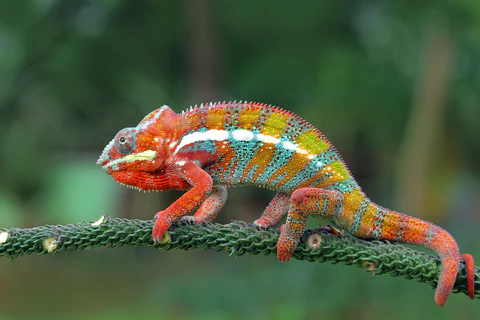
Whether you’re a seasoned herpetologist or a beginner reptile keeper, the veiled chameleon is a rewarding species to care for—provided you understand its specific needs and quirks.
Physical Characteristics
The veiled chameleon is easily identifiable by the large, helmet-like casque (a crest on the head), which is more pronounced in males. Males are typically larger and more vibrantly colored, often featuring patterns of green, yellow, and blue. Females tend to be slightly smaller and less colorful but are still visually stunning in their own right.
One of their most famous traits is their ability to change color. While many believe chameleons change color to match their surroundings, the reality is more nuanced. Veiled chameleons shift hues in response to emotions, health, temperature, and mating behavior. For instance, a calm chameleon might appear light green, while a stressed or angry one may show darker tones or bold stripes.
Habitat and Enclosure
Setting up the right habitat is crucial to your chameleon’s health. Veiled chameleons require a tall, vertically oriented enclosure since they are arboreal and love to climb. A screen enclosure is preferred over glass to provide adequate ventilation.
Basic enclosure setup:
- Size: At least 24x24x48 inches for an adult.
- Lighting: Full-spectrum UVB lighting is essential for bone health and calcium absorption.
- Temperature: Maintain a daytime basking spot of 85–95°F, with a cooler ambient temperature around 75–80°F. Nighttime temps can drop to 65–70°F.
- Humidity: Keep it between 50% and 70%. Regular misting and a drip system are essential to maintain hydration.
Natural branches, vines, and live plants like pothos or ficus can help replicate their native environment, making them feel secure and enriched.
Diet and Nutrition
Veiled chameleons are insectivores, and their diet should include a variety of gut-loaded insects such as crickets, dubia roaches, and silkworms. Adult chameleons may occasionally enjoy leafy greens or small portions of fruit.
Supplementation is important:
- Calcium: Dust insects with calcium powder (without D3) at most feedings.
- Vitamins: Use a multivitamin supplement (with D3) once or twice per week.
Fresh water is crucial. Chameleons don’t typically drink from standing water; they prefer droplets from misting or drippers.
Behavior and Temperament
Unlike some reptiles, veiled chameleons are not social creatures. They prefer solitude and may become stressed if handled frequently or housed with other chameleons. It’s best to observe and appreciate them rather than treat them like cuddly pets.
That said, many keepers find their behaviors endlessly fascinating—from the way they stalk prey with their long, sticky tongue to their turret-like eyes that can rotate 180 degrees independently.
Health and Longevity
With proper care, veiled chameleons can live 5 to 7 years, though some have been known to reach 8 or more. Common health issues include:
- Metabolic bone disease from lack of UVB and calcium.
- Dehydration, often due to inadequate misting.
- Respiratory infections in enclosures that are too humid or poorly ventilated.
Routine health checks and maintaining the right habitat conditions can prevent most of these issues.
The veiled chameleon is a stunning, intelligent, and unique reptile species that can be a joy to keep for those willing to meet its specialized needs. While not a beginner-friendly reptile for those seeking a hands-on pet, it’s perfect for enthusiasts who enjoy creating naturalistic setups and observing complex reptilian behavior. For those looking for a visually captivating addition to their exotic pet family, the veiled chameleon is hard to beat.
The veiled chameleon is more than just a beautiful reptile—it’s a complex and intelligent animal that thrives with the right care, environment, and respect for its space. While they may not be the most hands-on pet, their unique behaviors and vivid appearance make them a truly rewarding companion for reptile lovers. Have you ever cared for a veiled chameleon, or are you thinking of getting one? Let us know in the comments! We’d love to hear your experience or questions.
Frequently Asked Questions
What do I need to take care of a Veiled Chameleon at home?
To care for a Veiled Chameleon, you’ll need a tall, ventilated enclosure, UVB lighting, proper humidity levels (50–70%), and a diet of gut-loaded insects. Regular misting and calcium supplements are essential for their health.
Can veiled chameleons be handled or held regularly?
Veiled chameleons are solitary and can become stressed when handled often. While occasional gentle handling is possible, they are best appreciated as display pets rather than cuddly companions.
How long do Veiled Chameleons live in captivity?
With proper care, a veiled chameleon can live between 5 and 7 years in captivity. Some may live longer if given optimal conditions, including proper lighting, diet, and habitat setup.

